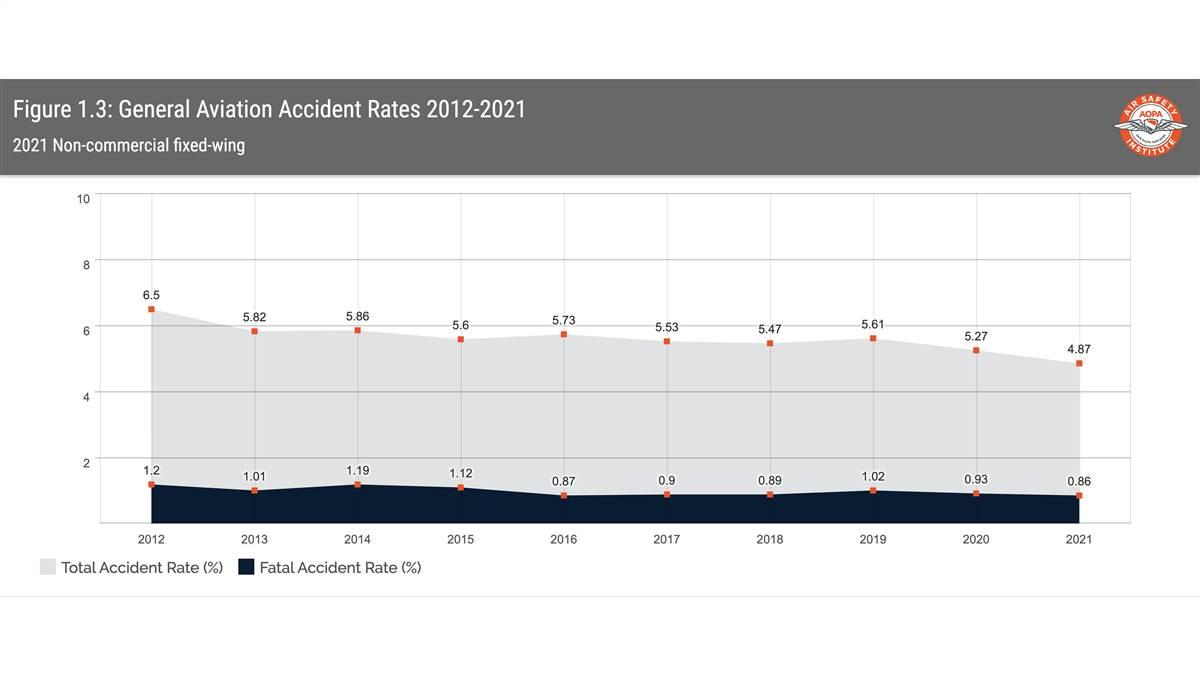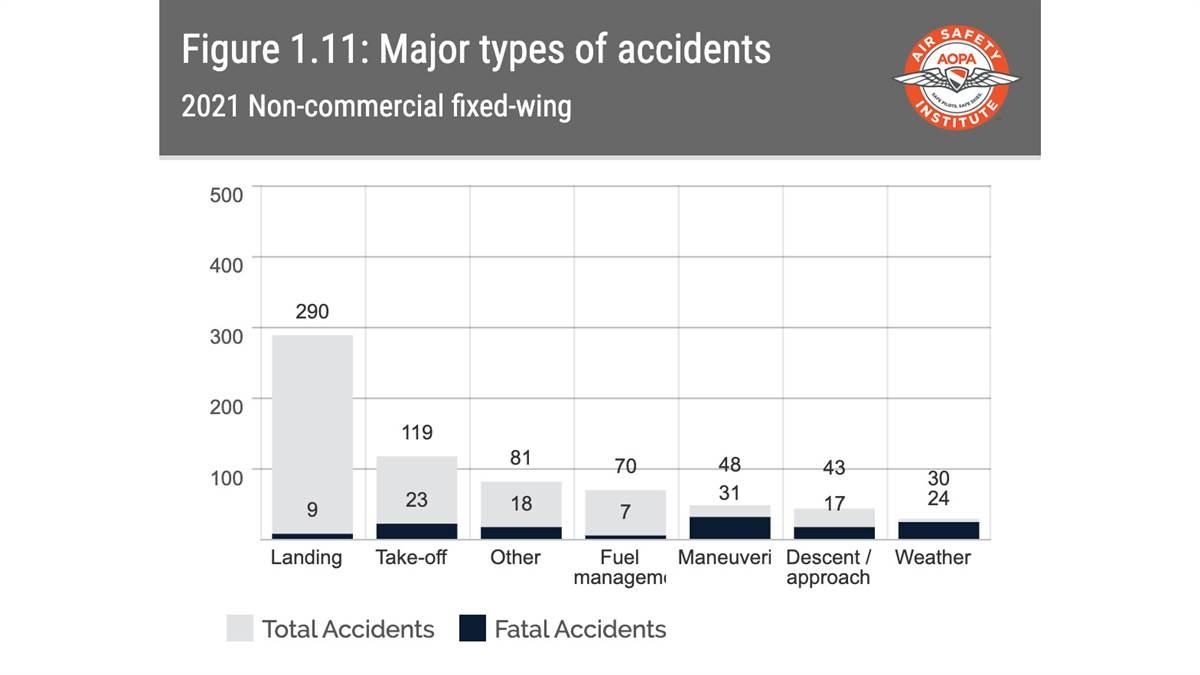Lessons learned from 2021
We flew more, but we also had more accidents
By Robert Geske
The general aviation accident rate decreased in 2021 in spite of an increase in total accidents, according to the latest analysis from the AOPA Air Safety Institute.

The Richard G. McSpadden Report: AOPA Air Safety Institute 33rd Accident Report (formerly, the Joseph T. Nall Report) was recently released, covering accidents from 2021. The report was renamed in honor and memory of our beloved friend and colleague who lost his life in an aviation accident in Lake Placid, New York, on October 1, 2023. Richard’s efforts to modernize aviation safety, reporting, and outreach helped envision the current iteration of this report.
A review of the data shows segments of general aviation improving, while other segments stagnated or even increased accident rates. The greatest improvements are in noncommercial fixed-wing, commercial fixed-wing, and commercial helicopter segments. Concerning was a large spike in the noncommercial helicopter accident rate. While it is expected that aviation accident rates will occasionally trend upward before continuing back down, the large delta between the previous recorded year (2020) and the current year is higher than anticipated. This segment has struggled for the past few years to rein in accident rates, especially fatal accidents, which have risen above the 2015-2017 average. Noncommercial helicopter accidents largely consisted of rotorcraft aerodynamic issues due to pilots failing to monitor rotor speed, creating conditions for reduced rotor performance, and general helicopter handling.


Zooming back out to all GA, accident numbers—both fatal and total—were up. However, the addition of four million flight hours compared to 2020 created a decline in the accident rates (see “Why We Normalize Data”). Pilots’ actions accounted for majority of accidents, just shy of 70 percent. Time and again, we find errors within our own community whose action or lack of action defines the accident sequence. Landing accidents, again, dominated the phase of flight, although this category suffers few fatal accidents. Loss of control, mainly directional control, contributed the most in this phase. As pilots, we need to continuously focus on stick and rudder skills along with creating realistic training scenarios that better prepare us for these types of loss of control events.
In terms of the most lethal, weather accidents lead for a second year in a row, followed closely by maneuvering. Roughly 80 percent of weather accidents were fatal, which speaks to a pilot’s underestimation of the reality associated with Mother Nature. VFR flight into IMC was the leading cause of weather accidents. These largely avoidable accidents remain despite industry efforts to help pilots better understand the dangers associated with flight into adverse weather.

How to keep yourself out of the yearly statistics? Go out and fly. However, do not simply repeat your routine, but advance your abilities. Whether adding another rating or certificate, hone your skills, stay proficient, and improve overall flight safety. Additionally, fly regularly with an instructor, not just when it’s required for a flight review. Our goal as pilots and our duty to passengers is to be proficient in the aircraft we fly. Aside from being capable of operating the craft, we need to know when to push it back into the hangar. A true measure of a pilot’s skill is their ability to say no when all others say yes.
Robert Geske is the manager of aviation safety analysis for the Air Safety Institute. [email protected]


